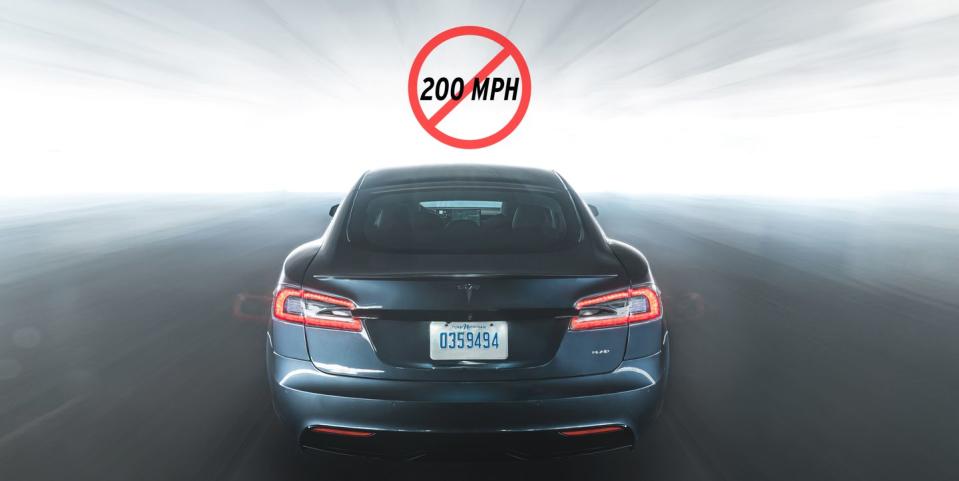Tesla Model S Plaid Can't Go 200 MPH. And, Trust Us, You Wouldn't Want to Even If It Could

Among the many claims Tesla has made for the 1020-hp Model S Plaid is that it is capable of 200 mph. That's a rarefied velocity for any car, but especially so for an EV, as they tend to be limited by the maximum rotational speed of the electric motors. That's particularly true of EVs that use a single-speed reduction ratio, as Teslas do. But the company has a fix for getting its motors to spin faster: carbon-sleeved rotors that enable rotational speeds up to a claimed 20,000 rpm, or about 25 percent faster than before.
But while our test of the Plaid revealed its tremendous acceleration capability—tying the Bugatti Chiron Sport for the quickest quarter-mile time we've ever recorded—and a considerable improvement in its charging rate, it didn't get anywhere near 200 mph. Instead, it topped out at a governed 162 mph.
Given how unsettling the Plaid is to pilot at that speed, however, you wouldn't want to do 200 mph even if it could. Because it gets up to speed so quickly, we could simply lift off and coast rather than slam on the brakes. But that gave us a lot of time to ponder the Model S's high-speed behavior, which, frankly, was terrifying. It wanders in its lane, with lots of slop on center in the steering that doesn't have anything to do with the yoke. Putting it in the sport steering setting helped a little, but it's like Tesla neglected to dial in its high-speed steering and handling behavior. This is not what you want when traveling two-thirds the distance of a football field every second. Tick. Tick. Every other car that's in the same conversation—from the Porsche Taycan to the Bugatti Chiron—is unerring and locked on its lane at 150-plus mph.

Perhaps the real reason Tesla hasn't yet unleashed the Plaid's 200-mph capability is to avoid overtaxing the brakes. Even in our standard braking tests—five consecutive stops from 70 mph, and three from 100 mph with more space between—the Plaid's brake hardware was already starting to cry uncle. Not only did they smell like they were on the way out, there was a warning message that popped up on the dash notifying us of their imminent demise. And our test regimen isn't nearly as severe as hot-lapping on a racetrack.
Tesla has now said a $20,000 carbon-ceramic brake package is in the works for the Model S Plaid. Promised by mid-2022, this pricey upgrade includes substantially larger (and wider) rotors front and rear.
Waiting for a significant brake upgrade would be a prudent step in making the Plaid able to safely approach 200 mph, and it would also certainly be welcome when tracking this heavy four-door. But Tesla also needs to sort out its high-speed wandering.
You Might Also Like

 Yahoo Finance
Yahoo Finance 